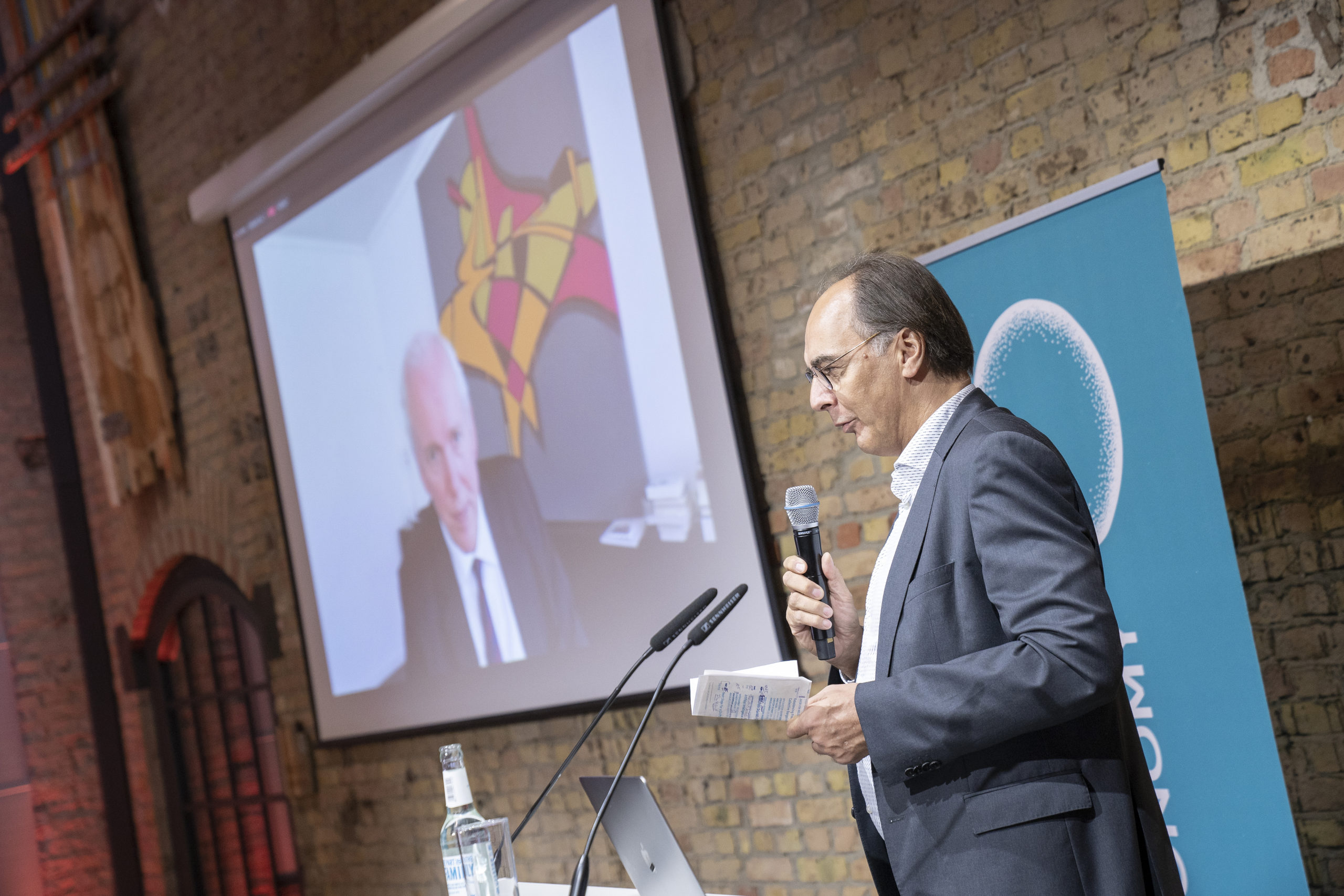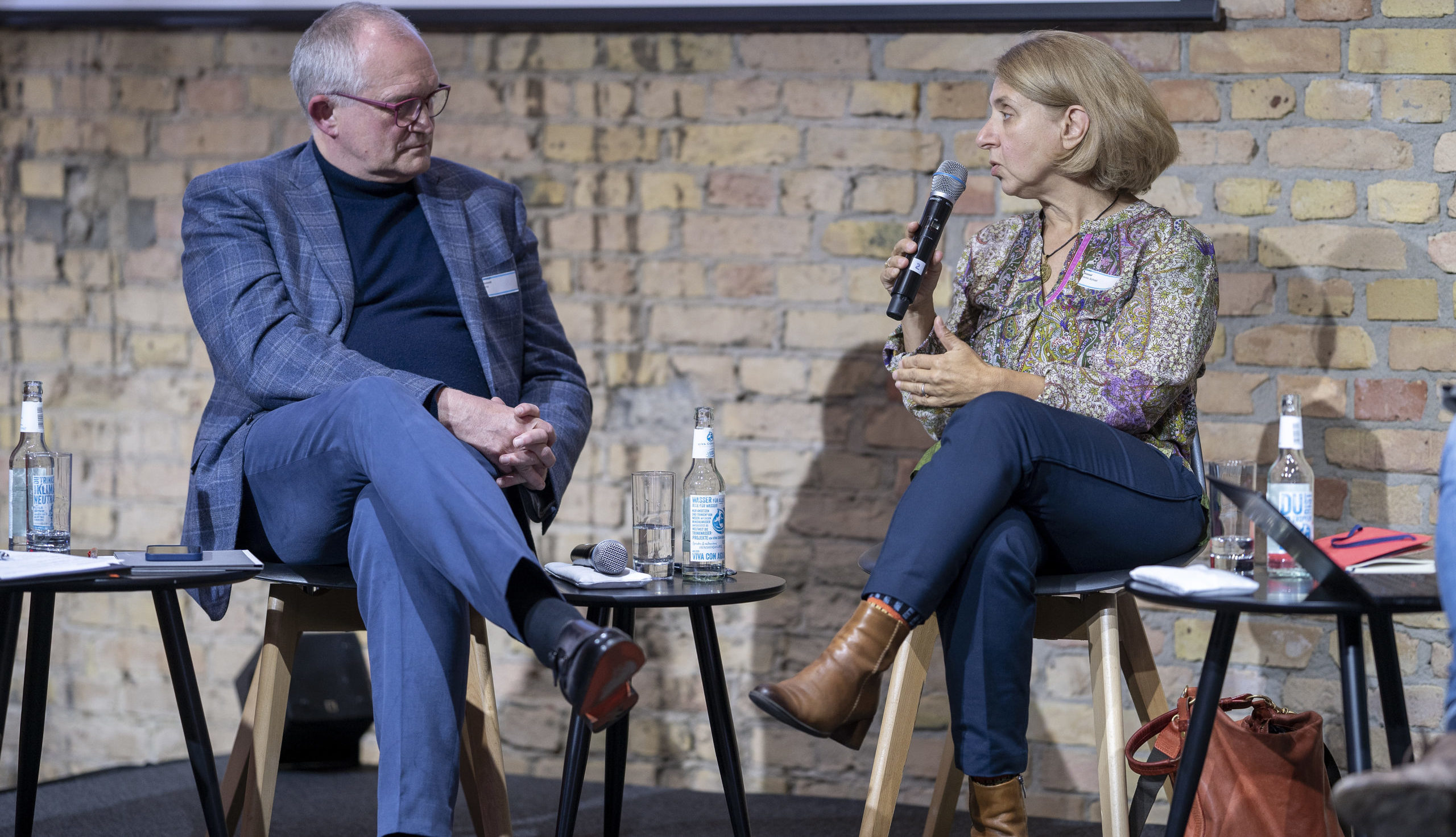CLIMATE
Are Green Jobs Good Jobs?
We invited leading experts to our New Paradigm Workshop to discuss what the labor market in a climate-neutral world will look like.
BY
SONJA HENNENPUBLISHED
12. OCTOBER 2022READING TIME
5 MINAs governments are struggling to implement the good jobs agenda, the need to accelerate the transition to a climate-neutral economy poses another element of uncertainty towards the return of the good job. How will policies that drive the net-zero transition affect the labor market composition? Which challenges and opportunities arise with regards to manifesting good jobs during the transition to a green economy? Are the new green jobs ‘good jobs’? And what kind of labor market policies are necessary to avoid that the net zero transition produces new disruptions and leaves people behind?
We invited Francesco Vona (University of Milan), Anna Valero (LSE), Christian Schneemann (IAB), and Samantha Smith (Just Transition Centre) to discuss the answers at our XI New Paradigm Workshop. The session was chaired by Tom Krebs.
To assess whether green jobs are good jobs, you first have to know how to define either of these terms. While good jobs pioneer Dani Rodrik, among others, has outlined quite precisely in various papers how good jobs could be defined, there isn’t a clearcut definition of green jobs. While most researchers base their analysis on the Green Economy program of the O*NET, the concept remains somewhat elusive. According to Vona, who started off the panel discussion, two different possible categorizations of green jobs have emerged: one defines the ‘greenness’ of a job according to the direct pollution content of the job. The other considers jobs as green that are essential to facilitate the green transition. Of course, without a standard occupational classification, Vona argued, it becomes that much harder to estimate the typical green job characteristics and ultimately, to determine whether they will be good jobs.
What current research can say about green jobs in terms of their characteristics, according to Vona, is that they typically require more on the job training, but not more education. They also pay a wage premium, even if it is a small one. The skill gap is more pronounced among green jobs but concentrated in areas that require advanced technological skills.
Vona then introduced a statistic that estimates the current share of green jobs in Europe at around 2 percent. Even more important than the absolute quantity of green jobs however is their spatial distribution.
“It is essential to know the share of green and brown jobs in a certain area to know which areas are most in need of policy measures for a green recovery and proactive regional policies.”
High carbon jobs are typically very spatially concentrated, leaving whole areas at risk of exposure to external shocks and the changes as part of the transition, and making the transformation all the more necessary.
To convince people to join re-training programs and switch from brown to green jobs, Vona proposed the introduction of a multidimensional index that allows to measure how good a job is. These dimensions could range from pay to job safety, health risks, and collective bargaining rights.
Another difficulty in answering the question whether green jobs will be good jobs lies in the fact that the answer may vary greatly depending on the country. Anna Valero from LSE presented a summary of her research on green good jobs, which seems to confirm that at least in the UK, greener jobs appear to be good jobs. While there is a large share of indirect green jobs, generally the findings indicate that they are held by more educated workers and workers in their prime working age, and command higher wages.
This is in slight contrast to the broader European context that was outlined by Vona. However, Valero pointed to the underrepresentation of certain groups in the green job field. Female workers and younger workers in particular seem to be underrepresented, making it all the more important to consciously ensure that the new opportunities are accessible to all. She also explained that people that do effectively transition from brown to green tend to come from jobs with a similar skill profile. This seems to confirm significant differences in the level of ease with which different groups will transition or reskill.
“Net Zero can provide good jobs, but they need to be more accessible to all. It is important that we embed net zero into a broader economic strategy for inclusive and sustainable growth.”
According to Valero, this will make on the job training, and targeted, place-specific approaches all the more important. Currently, she observed, there is a drastic underinvestment in retraining programs.
In terms of the German situation, Christian Schneemann from the IAB presented insights from their employment outlook under the implications of the green transition. He identified the three D’s – decarbonization, demography, digitization – as the key challenges that labor market policy will have to account for. From 2026, the population in Germany is expected to decline, making labor markets tighter and the search for qualified workers even harder. According to the IAB projections, in 87 out of 140 employment groups, labor demand will grow faster than supply.
Schneemann argued that alongside the question, whether green jobs will be good jobs, labor market economists and politicians have to think about the question whether there will be enough skilled labor available to facilitate the transition in the first place. As possible solutions he outlined education, better immigration procedures, and a better usage of domestic potentials (e.g., bringing more women into fulltime jobs).
While the theoretical, academic assessment of the situation is important to develop a better understanding of the challenges ahead, ultimately, the impact and character of the transition will depend greatly on the groundwork – convincing workers to participate in the transition and ensuring they will not suffer from it.
Samantha Smith from the Just Transition center, that works with unions to ensure a socially just transition, argued that from a practical perspective, a good job is not a good job until people have fundamental rights at work.
“Without the right to organize you don’t have the ability to make the job good, but are dependent on a tight labor market.”
Even though brown jobs often fall short on factors such as health and safety, according to Smith, they currently offer higher quality in terms of union density and usually come with long-term contracts and hence job security. Many of the new jobs, for example in the automotive industry, in contrast are with anti-union employers, resulting in lower wages, less jobs security etc. As a key factor in motivating people to transition from their old to new green jobs, she therefore underlined union membership and collective bargaining rights. Retraining opportunities should also be available near where people live and be free of charge.
“People are concerned about their future and their jobs, and they are interested in new technologies and roles. But they are not yet seeing these jobs materialize at scale. To convince them of the new jobs, they need to be organized, and pay good wages. This is a task for policymakers.”


